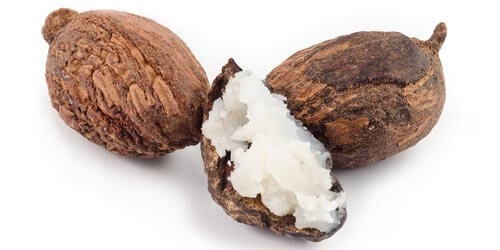Yarrow is my favorite herb to clear acne and I also find it great to hydrate the skin. It’s a versatile medicinal herb that has a centuries-old history in herbal medicine. The genus name Achillea comes from the name Achilles, a Greek war hero who used Yarrow to heal his soldiers. The old Icelandic name is actually Achilles’ herb.
How I Make Medicine with Yarrow
I love to make medicine with freshly-harvested Yarrow. I use fresh Yarrow flowers and leaves to make a tincture (herbs extracted in alcohol). That means I make the tincture on the same day as I pick the Yarrow in the wilderness. I then blend it with other tinctures to become the Acne Healing Extract. Here you can read the story of why I created the Acne Healing Extract, my bestselling product in Iceland. I infuse fresh Yarrow in oil to make the Bliss Healing Balm, another very popular product in Iceland. I also make a Yarrow herbal infusion to use in my moisturisers and I dry it for tea for to my patients.
- Botanical name: Achillea millefolium
- Parts used: flowers and leaves
- Action: astringent, diaphoretic, lowers fever, anti-inflammatory, lowers blood pressure, relieves muscle spasms, diuretic, cholagogue, hepatic, emmenagogue, antibacterial, prevents bleeding, anthelmintic, heals wounds and strengthens the circulatory system.
- Used for: acne, wound healing, bleeding, skin disorders, colds, flu, sore throat, fevers, blood pressure, urinary tract infections, diarrhoea, inflammation in the digestive system, regulating mensturation, menstrual pain, arthritis, varicose veins, phlebitis and hemorrhoids.
- Preparations: tea, tincture, essential oil, infused oil, poultice, suppository, cream, ointment.
Yarrow for Acne and Skincare
Yarrow has a broad anti-bacterial, antiseptic and antimicrobial action. It’s also anti-inflammatory and especially effective against acne, spots and blemishes. Fresh Yarrow flowers and leaves are the main ingredients in my Acne Healing Extract. I also use Calendula and Arctic Thyme in the Acne Healing Extract. I find combining all three gives the best result. Yarrow is a powerful antioxidant due to flavonoids, one of it’s active ingredients. That makes it an excellent hydrating herb and the reason I use it in the following moisturisers:
Yarrow for Bleeding and Wounds
Yarrow is useful to stop all kinds of bleeding, as well as for healing wounds and skin disorders. It’s especially good for old sores that are slow to heal. This is the reason I use Yarrow in the Bliss Healing Balm which is very effective for wounds and inflamed skin. Icelanders have used it for the last 10 years with great results.
Bliss Healing Balm is excellent for:
- Wound healing, itching and insect bites
- Diaper rash, sore nipples and stretch marks
- Vaginal yeast infection and hemorrhoids
- Skin disorders and cold sores
How Yarrow is used in Herbal Medicine
Yarrow is one of the most all-round medicinal herbs there is. It’s traditional to use it for colds and flu’s, childhood diseases and as a remedy for the digestion. Yarrow is also a woman’s herb and is for example used to regulate periods as well as many other women’s issues. It balances the blood and has long been popular for arthritic conditions. If you want to read more about Yarrow, I recommend my book: Icelandic herbs and their medicinal uses.
Research on Yarrow for Skin
In vitro tests on Yarrow show that it has antibacterial and antiviral properties.1-4 Research on Yarrow has also shown it to reduce bleeding 9 and several research trials have shown the antioxidant effects of Yarrow.4-8
- Frey FM, Meyers R. Antibacterial activity of traditional medicinal plants used by Haudenosaunee peoples of New York State. BMC Complement Altern Med. 2010 Nov 6; 10(1):64. [Previous Epub.]
- Kotan R, Cakir A et al. Antibacterial activities of essential oils and extracts of Turkish Achillea, Satureja and Thymus species against plant pathogenic bacteria. J Sci Food Agric. 2010 Jan 15; 90(1):145-60.
- de Sant’anna JR, Franco CC et al. Genotoxicity of Achillea millefolium essential oil in diploid cells of Aspergillus nidulans. Phytother Res. 2009 Feb; 23(2):231-5.
- 2005. WHO monographs on selected medicinal plants. Vol. 4. World Health Organization, Geneva.
- Kintzios S, Papageorgiou K et al. Evaluation of the antioxidants activities of four Slovene medicinal plant species by traditional and novel biosensory assays. J Pharm Biomed Anal. 2010 Nov 2; 53(3):773-6. Epub 2010 May 20.
- Potrich FB, Allemand A et al. Antiulcerogenic activity of hydroalcoholic extract of Achillea millefolium L.: involvement of the antioxidant system. J Ethnopharmacol. 2010 Jul 6; 130(1):85-92. Epub 2010 Apr 24.
- Raudonis R, Jakstas V et al. Investigation of contribution of individual constituents to antioxidant activity in herbal drugs using postcolumn HPLC method. Medicina (Kaunas). 2009; 45(5):382-94.
- Csupor-Löffler B, Hajdú Z et al. Antiproliferative effect of flavonoids and sesquiterpenoids from Achillea millefolium s.l. on cultured human tumour cell lines. Phytother Res. 2009 May; 23(5):672-6.
- Santos AO, Santin AC et al. Activity of an essential oil from the leaves and flowers of Achillea millefolium. Ann Trop Med Parasitol. 2010 Sep; 104(6):475-83.
About the Author
Anna Rósa is a medical herbalist and author of the bestselling book Icelandic Herbs and Their Medicinal Uses. She’s the CEO and founder of Anna Rósa Skincare and a member of the National Institute of Medical Herbalists in UK. It’s the oldest herbalist institute in the world, founded in 1894.




































How soon after providing my name and email will I receive 25 NATURAL WAYS TO MAKE YOUR SKIN GLOW? It has been at least 10 minutes now and most of the time, a sign-up sends the document immediately.
Thank you for your response
You should have received it within a minute, maybe there is some glitch in the system I’m not aware of! Did you check your junk folder, it sometimes lands in there? If not, then please email me at care@annarosaskincare.com and I’ll get it to you right away!
Did not get get free guide
Hi Rose, my apologies for the late reply! I’m not sure why you didn’t get your free guide but I’ve now added you to the list manually. Please check you spam folder if you can’t find the guide, it often lands there! If you still can’t find it please let me know (care@annarosaskincare) and I’ll make sure you get it!